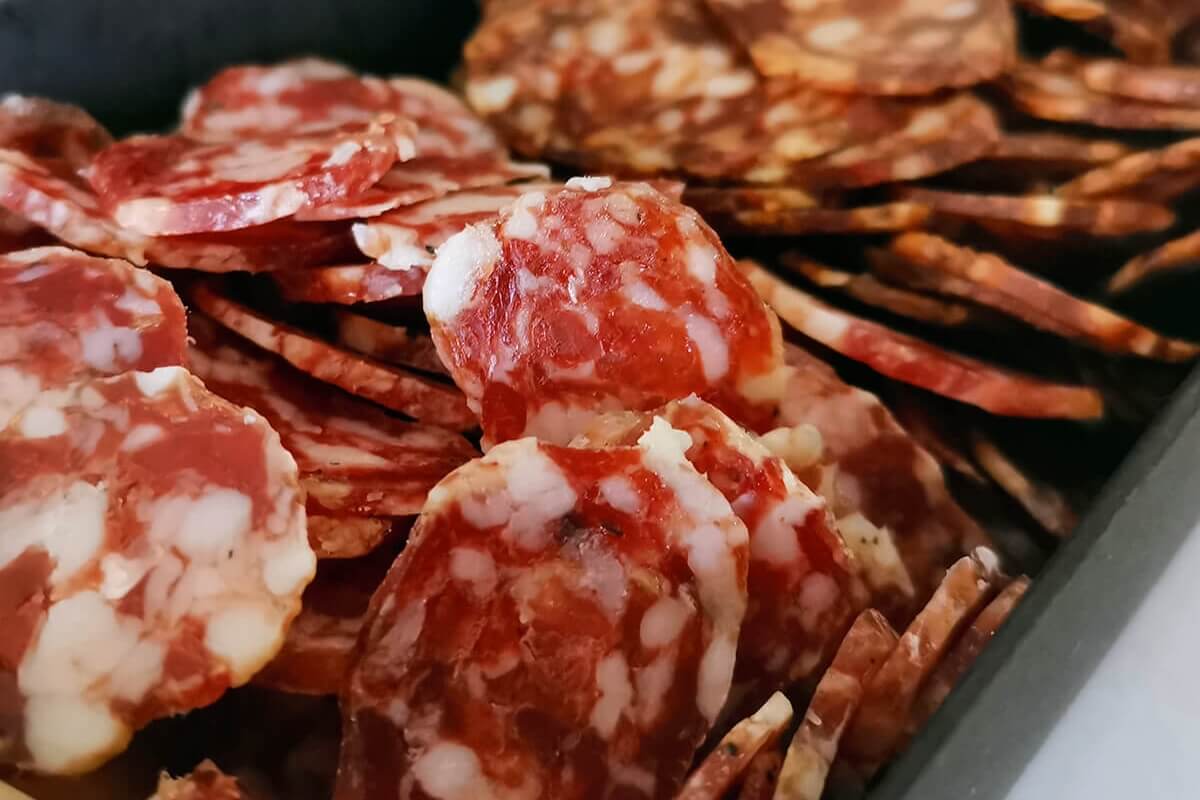Salami is a classic cold meat and charcuterie favourite that is adored around the world. Fortunately for salami lovers, there is a multitude of different types and varieties from which to continually choose and ultimately experiment and enjoy. Let’s quickly take a look at how salami is defined and then dig deeper into a few types of salami and how they can best be enjoyed. We’ve also got two fine new products to show off.
Sol’s masterclass: Salami 101
- What exactly is charcuterie?
- What is salami?
- Established salumis & pairing ideas
- Sol’s latest charcuterie products
- Is salami suitable for pets?
What exactly is charcuterie?
Charcuterie is the practice of meat preservation which utilises the basic scientific principle of osmosis by removing moisture through salting and drying, to prevent bacterial growth and degradation of the product. The end result is a lengthened shelf life of the meat which can last through the leaner months of the year, and a product that has taken on intensified and unique flavours.
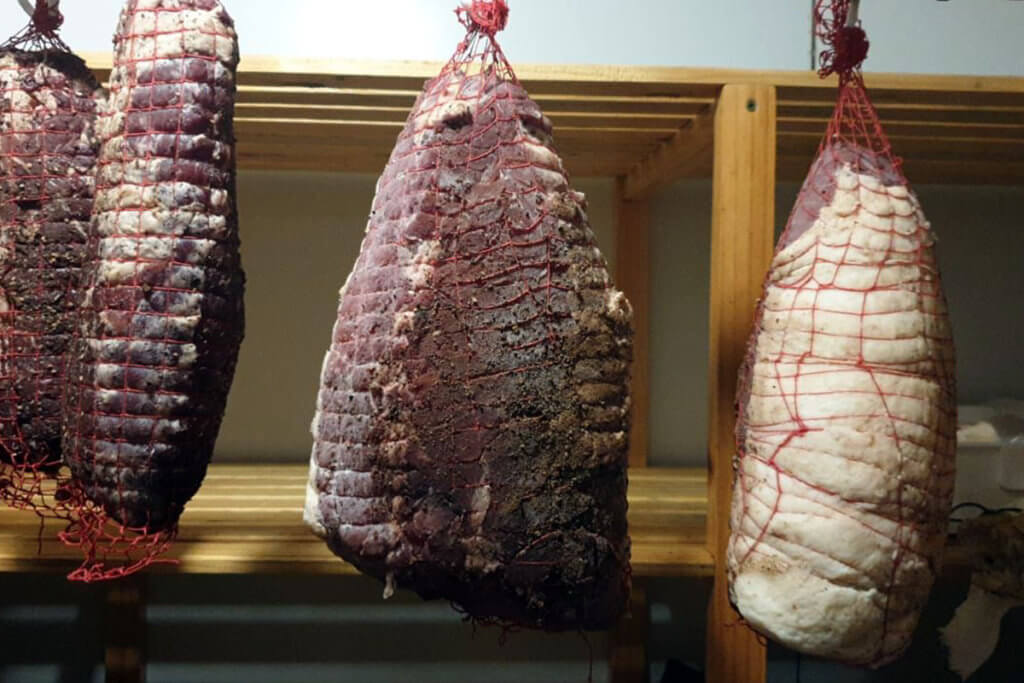
So, is charcuterie any type of dried meat? Technically speaking, yes, although many variations can be found involving slightly different curing techniques. The name of this process changes across the globe, but charcuterie is the most ubiquitous name for this style of cured meat in Europe and the western world.
There are numerous names and styles of charcuterie that include different animals, cuts and techniques, so it’s only natural to be a bit confused by it all. Some are made with whole joints of meat, others with smaller cuts of deboned meat, some with different herbs and spices or those which are cured with smoke and/or brine. Last but not least, there is the charcuterie which is ground into a forcemeat and hung in a natural casing.
And that’s where salami enters this deliciously exciting equation.
What is salami?
It’s unknown when the first salami as we know them today were made. In Roman times, they belonged to a group of food called salsum which means “salted.” Salame, like sopressata and sausages, belongs to the category of air-cured pork meats called salumi insaccati (encased), meaning that the meat is wrapped in a natural skin made from pig intestine.
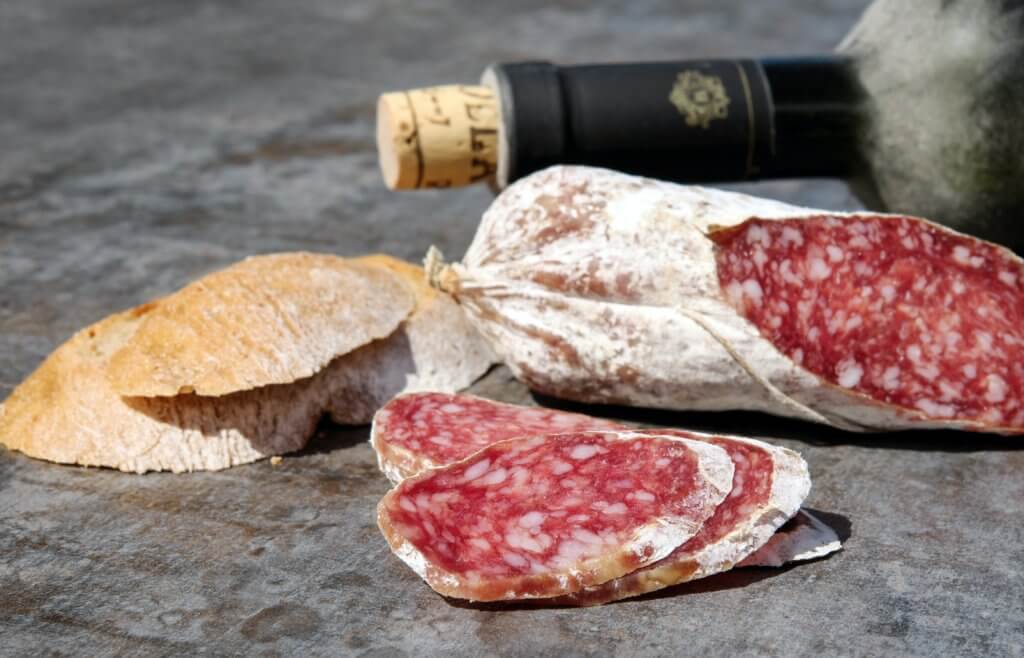
As with many types of charcuterie, after the ageing process, traditional salamis will be covered in a gentle white mould. Don’t be alarmed by this, these are natural penicillin, aspergillus and noble moulds which are essentially good for the human microbiome and therefore good for you. The most immediately practical purpose they serve is to help in the curing process as they compete with harmful micro-organisms on the surface of the sausage, acting as a natural anti-oxidant. These moulds add additional flavour but are frequently removed along with the casing before serving.
TOP TIP: If you ever see black or yellow moulds on charcuterie, then it’s unsafe to eat.
Chef Sol
Salami is almost always made with pork meat but some special variations might utilize wild boar and even duck. The meat is ground and kneaded to achieve the desired texture, and then various spices are added according to regionality, seasonality and preference. In general, the cuts of pork used are the thigh, shoulder, loin, filet, belly and the succulent fat from the pig’s jowls (guanciale). Salami is usually aged between 30 and 90 days. A good salami has to have struck the perfect and delicate balance of lean meat and fatty goodness. The best salami is artisanal —“fatti come una volta” which means “made as they used to be.”
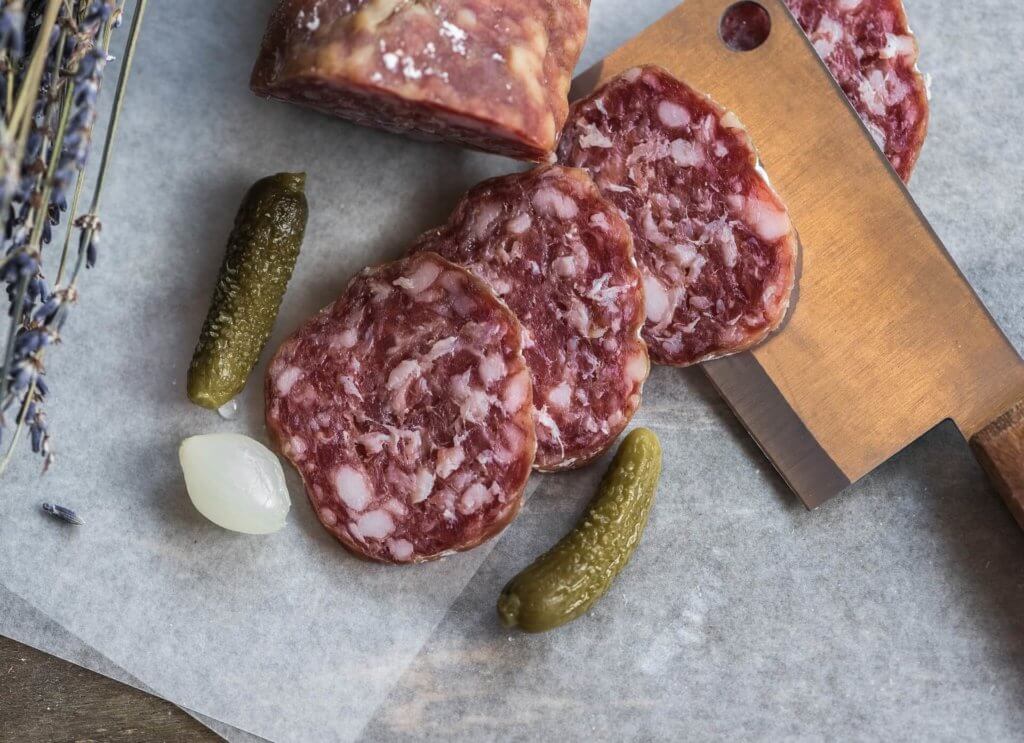
The category of cured ground meat sausages are generally referred to as salumi, and within that category, there are hundreds if not thousands of different varieties all tailored to the terroir from which they hail and the ingredients favoured in those regions.
Salamis differ throughout Italy, with each province claiming the bragging rights and possession of the defining ingredient which makes theirs the champion meat. Spain’s Chorizo, Portugal’s Paio de Beja, the Slavonski Kulen hailing from Serbia/Croatia and a Kolbasz from Hungary could all technically be classified as the same cured sausage with subtly different characteristics. We even have our own cured beef sausage down here in South Africa called droewors.
Here are some of the traditional established names in the world of salumis that you should know and hopefully have the pleasure of enjoying someday soon.
Established salumis & pairing ideas
Genoa salami
Region: Genoa, Italy
Defining characteristic: Medium grind, garlic-heavy with a clean finish and rich flavour, making it a popular choice.
Pairing ideas: Semi-soft cheese, MCC, warm crusty bread, easily integrated into cheeseboards and existing recipes.
Felino salami
Region: Felino, Italy
Defining characteristic: AKA the “king of salami” that is famed for its smooth consistency, sweetness and delectable flavour which is minimally spiced and punctuated by peppercorns and wine.
Pairing ideas: Crusty bread, red wine, Parmigiano reggiano cheese
Top tip: When serving, cut slices thick enough so as to incorporate a balance of zesty peppercorn and smooth fat.
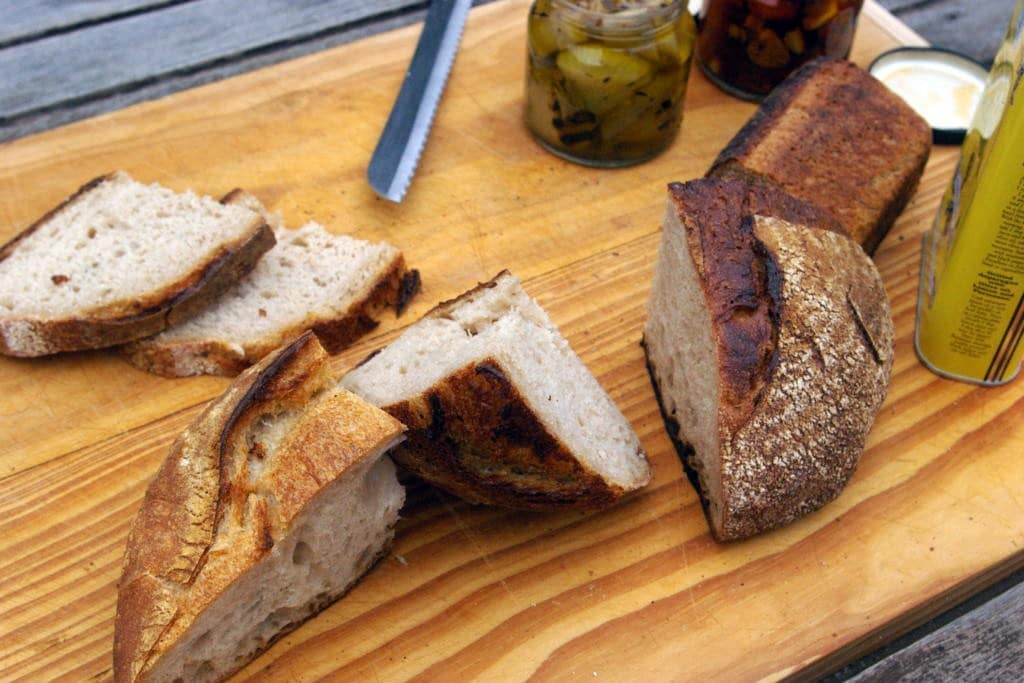
Sopressata
Region: Italy
Defining characteristic: Smooth texture and extraordinary bold flavour.
Pairing ideas: Goat cheese, crackers, melba toast, dry rosé
Pepperoni
Region: United States
Defining characteristic: Stands out for its signature smoky and sweet flavour and is popular around the world as a pizza topping.
Pairing ideas: Pizza, green salad, craft beer, mozzarella cheese

Chorizo
Origin: Spain, Mexico
Defining characteristic: Dried, cured, Spanish-style salumi rich with smoked paprika, fresh garlic, herbs, and spices and a deep smoky undertone.
Pairing ideas: Manchego cheese, olives, fruity preserves
Cacciatore Salami
Origin: Italy
Defining characteristic: Minimal spices enhance the flavour notes of fresh garlic and coarsely-ground black pepper.
Pairing ideas: Parmigiano-reggiano, crusty bread, lager beer
Finocchiona Salami
Origin: Tuscany
Defining characteristic: Finocchiona salami boasts a rich spice blend that incorporates toasted fennel seeds to create a fragrant and bold salami.
Pairing ideas: Salad, olive oil, fresh sourdough, pinot gris
Sol’s latest charcuterie products
The Sol’s range is designed so that it’s exponentially more enjoyable and rewarding when shared with friends and loved ones in a beautiful setting. For meat lovers, charcuterie can often serve as the backbone of a memorable cheeseboard, with cheese and charcuterie going together like horse and carriage. Connection and collaboration are important between foods and flavours too.

Our newly-released salami is a finocchio style product that is handmade using traditional methods and local ingredients. Fennel, black pepper & garlic complement this free-range, whey-fed pork superbly. We’ve also got a range of chorizo which is a slightly sweet, Picante salumi flavoured with paprika, garlic and chilli. If you love salami and chorizo equally, we have a mixed box.
Pairing ideas/serving suggestion: Pickled cucumber, Duqqah spice, Grilled fennel & onion, integrate into cheeseboards or wolf down as a simple snack.
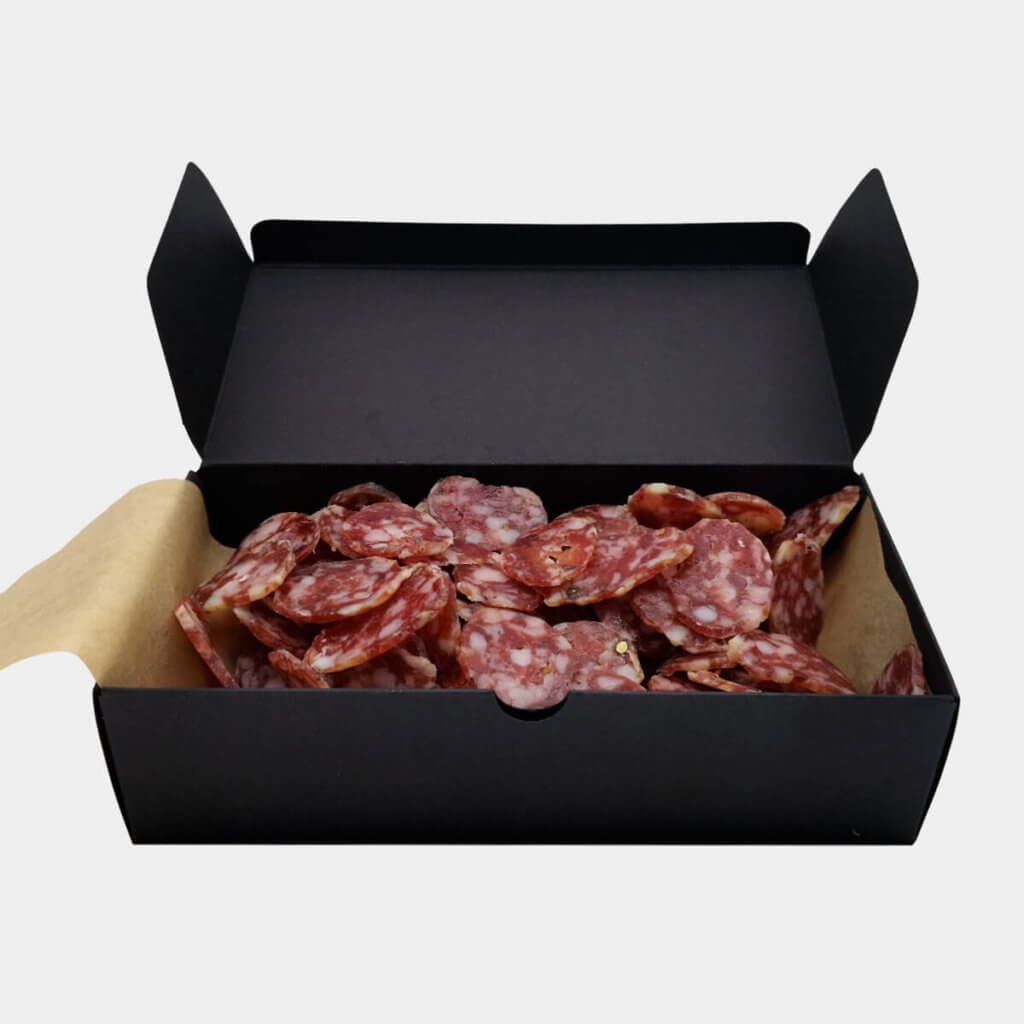
Is salami suitable for pets?
Salami is technically safe to offer your cat in moderation. The Spruce Pets website goes into the issue in a little more detail in case you’re interested in doing some research because if you’re acquainted with the popular cat & salami memes doing the rounds on Google, you’ll know that’s tricky to separate facts from fiction. Salami is a delicious snack for humans and should be primarily treated as such, but perhaps cats can also have a little salami, as a treat.

It’s easy to see why salami is so well-loved around the world and it’s exciting to realise that the sky is the limit for new variations of a household favourite.

